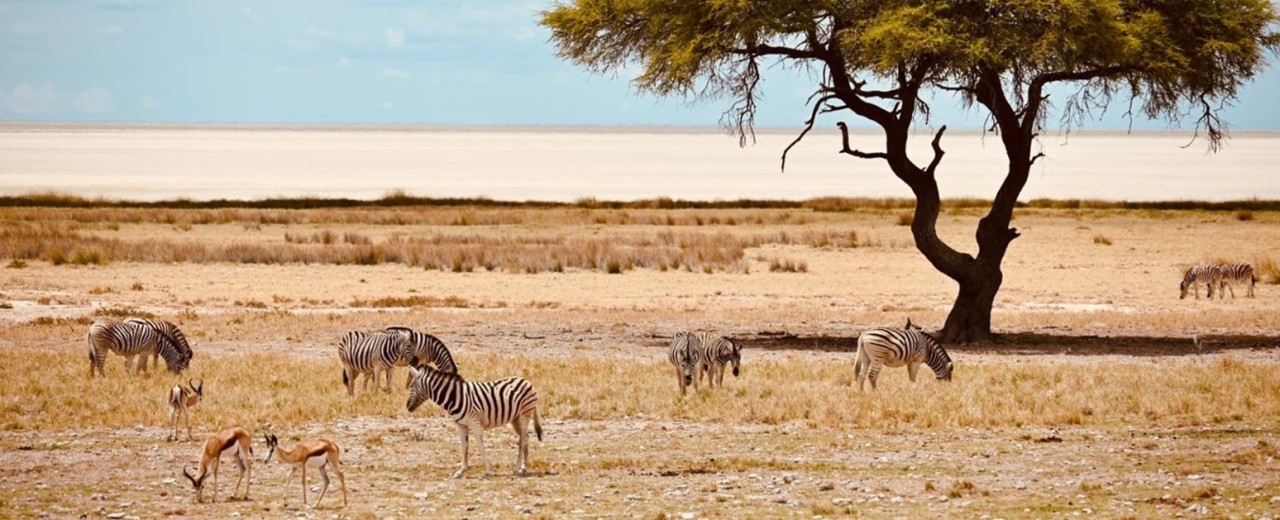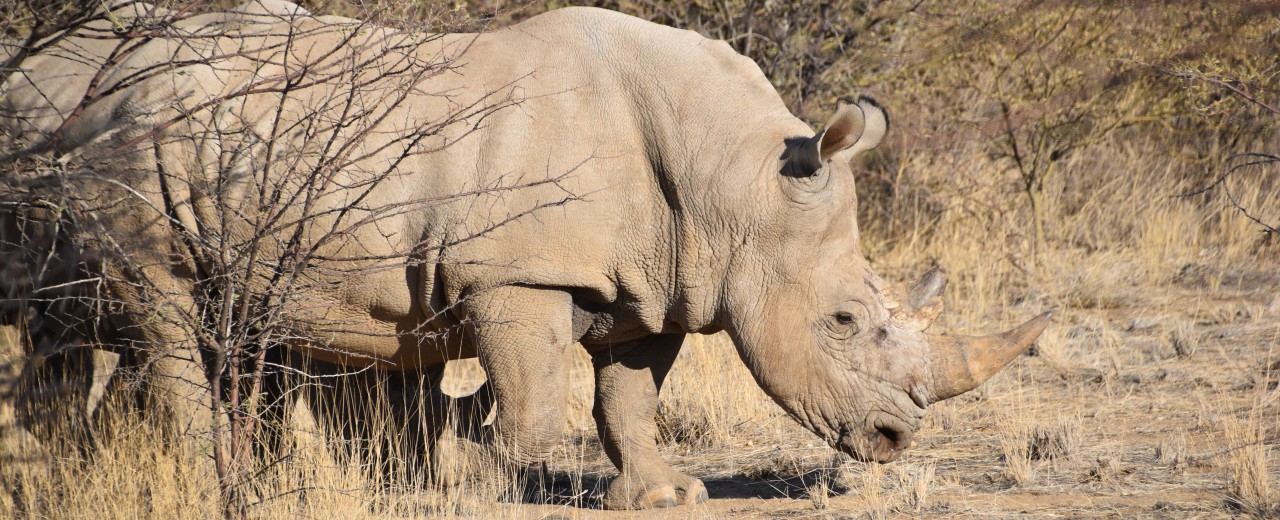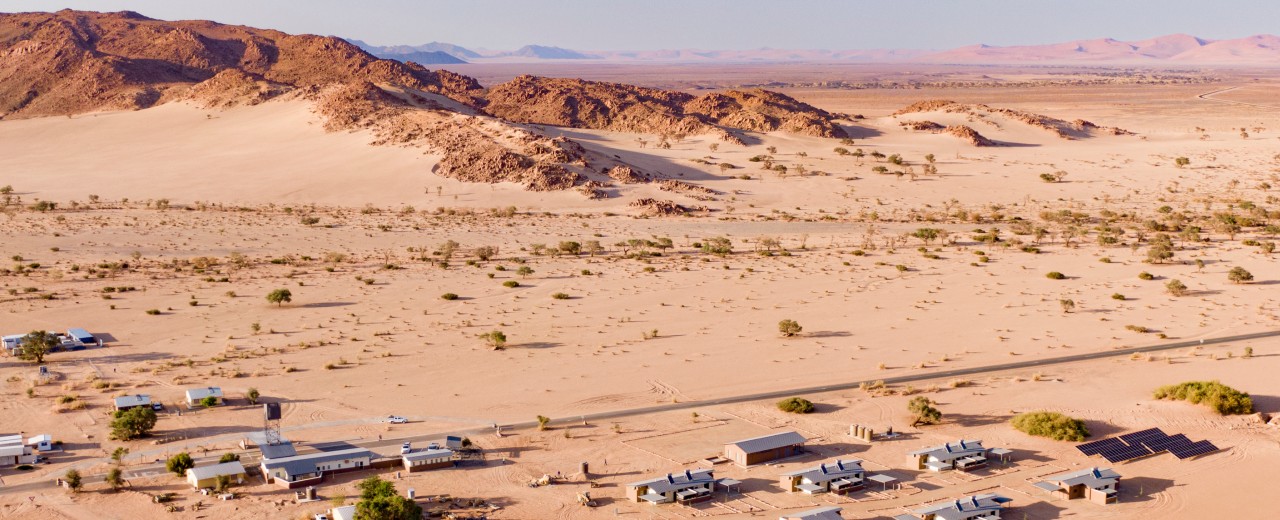News from 2025-05-22 / KfW Development Bank
Namibia – a shining example of nature conservation
Over 40% of Namibia’s land mass is now protected – a success to which KfW is also contributing.

Namibia’s landscape is one of the most impressive on Earth. With its spectacular colours and wide open spaces, the rugged beauty of this fascinating country is truly captivating. The nature here is extremely diverse, ranging from the majestic dunes of the Namib Desert to the rich wildlife of Etosha National Park, from the Skeleton Coast to the monumental granite mountains in the Erongo region.
Although nature itself is the best artist, a huge amount of human commitment has been at play in these areas too. Namibia wants to preserve this treasure, with and for the population, but also for economic reasons. As a result, it has become the first country in Africa to include nature conservation in its constitution, in which everyone in the country is called upon to protect the environment – not just for the benefit of this generation, but for the sake of the generations to come too. But it doesn't stop there. Namibia has been active in nature conservation for years and has now placed around 42% of its land mass under various forms of protection, an area equivalent to the size of Germany.
International quota already exceeded
This means that the country has already exceeded the internationally prescribed quota of 30%. At the UN Biodiversity Conference that took place in Montreal in 2022, the contracting states agreed on 23 concrete goals for preserving biodiversity, and one of the main ones was the “30x30 target”, according to which all countries should protect 30% of their land and sea area by 2030. On average, close to 18% of a contracting country's land and sea area is currently under protection. And so, with around 40% of its land mass now officially protected, Namibia occupies a top position not only in Africa, but also worldwide in this regard.
The protected areas include 20 national parks, as well as municipal forests and protected areas where the local population is involved and plays a role in decision making. These areas – known as "conservancies" – are managed by local communities and are regarded as a model for community-based nature conservation, where people, nature and the economy benefit in equal measure. Each conservancy has an elected management committee responsible for wildlife monitoring, revenue distribution, conflict resolution and cooperation with tourism companies. Some of the revenue goes to the community, while another portion is reinvested in protection. “We are convinced that successful nature conservation is impossible without the participation of people”, said former Namibian Minister of Environment, Pohamba Shifeta, when describing the concept. The combination of different forms of protection is the decisive reason for Nambia's success when it comes to nature conservation.

The country's achievements are not only reflected in the protected areas themselves, but also in its wildlife numbers: today, Namibia has the largest wild population of black rhinos and cheetahs. It is the only country with a growing population of wild elephants, and the number of desert lions is also considerable. Occasional conflicts between humans and wildlife are inevitable and will always be a challenge for the country. However, the government is working on solutions such as better early warning systems and compensation programmes for livestock loss.
Long-term support from KfW
KfW has played a significant role in making Namibia a shining example of nature conservation worldwide today. The development bank has been supporting the country in this sector for many years on behalf of the German Federal Government. Indeed, KfW has supported all 20 national parks and Namibia's 86 municipal protected areas in various ways on behalf of the German Federal Government. Half of the municipal forests were also co-financed by KfW. All this is done, for example, through the “Community Conservation Fund of Namibia” (CCFN), which supports communities in the poorest regions of Namibia in order to generate income from nature conservation.
Another example is the Namibia National Parks Programme (NamParks), which maintains, manages, and modernises state protected areas. Namibia launched NamParks in 2006 with KfW support. KfW’s funding is now entering the fifth phase and includes financing for park infrastructure such as administrative buildings, access gates, parking stations, in addition to patrol equipment and management and tourism development plans. The latter is important because sustainable tourism is a vital source of income for the country as a whole and for preservation of its parks in particular.

KfW is also supporting the KAZA project, a cross-border nature reserve the size of France that encompasses part of northeast Namibia. KAZA aims to restore natural habitats for wildlife and to harmonise environmental laws and wildlife regulations across the five participating countries Angola, Botswana, Zambia, Zimbabwe and Namibia. It is a globally pioneering model. KfW also supports important protected areas in Namibia through the Legacy Landscapes Fund and the Blue Action Fund.
"Germany is one of our largest partners in nature conservation" is a line we frequently hear from the Namibian government. KfW Office Manager Beatrice Lucke says: "We are delighted that we have been able to do our bit here, and that we continue to do so. Now it is a matter of making nature conservation financing in Namibia solid and sustainable. To this end, we are currently working with our Namibian partners on a new financial mechanism to attract more donors." So that Namibia can remain a success story for many years to come.
Further Information:

Share page
To share the content of this page with your network, click on one of the icons below.
Note on data protection: When you share content, your personal data is transferred to the selected network.
Data protection
Alternatively, you can also copy the short link: https://www.kfw-entwicklungsbank.de/s/enzBWrMC.DPuA
Copy link Link copied